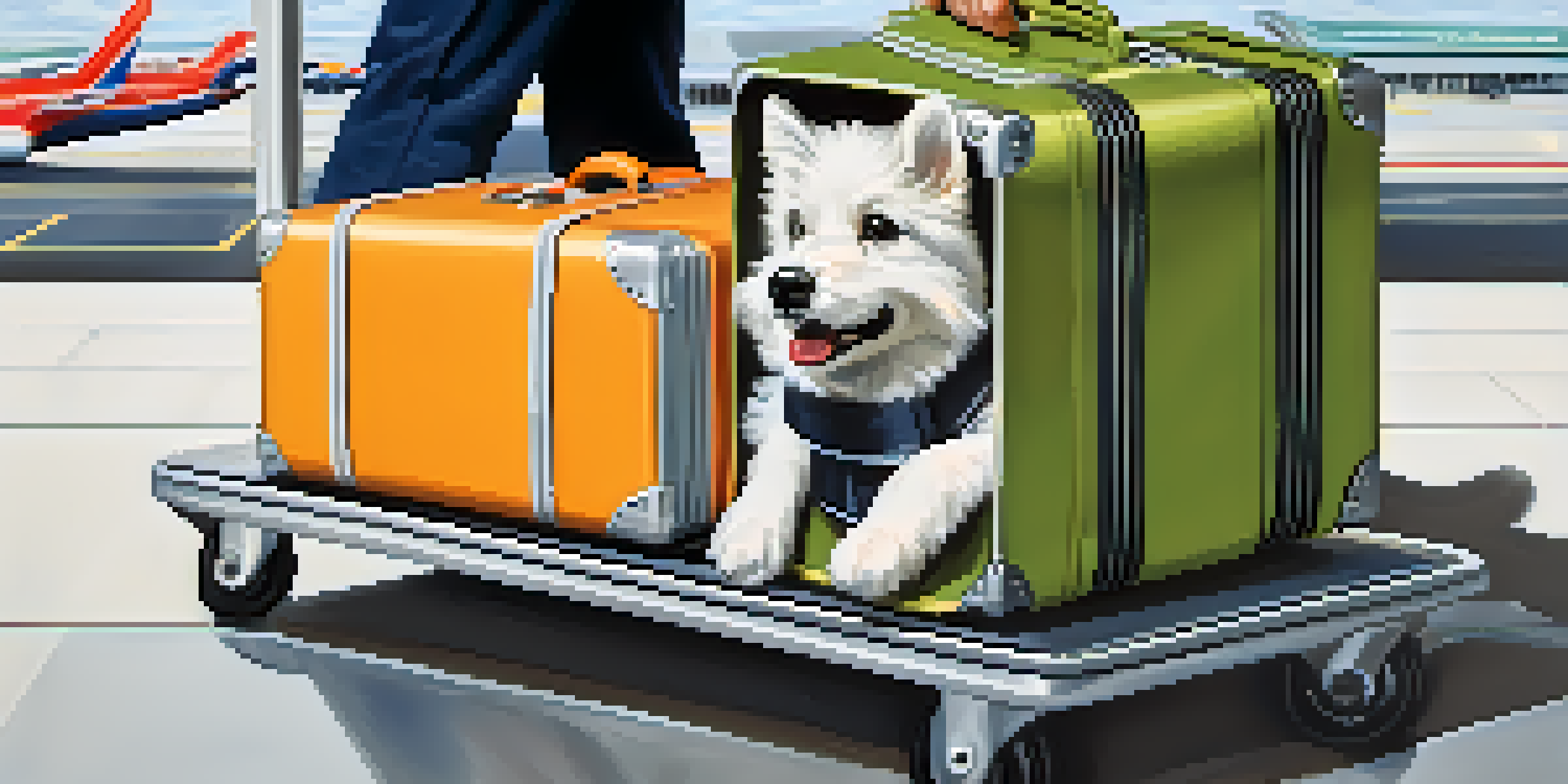Choosing the Right Travel Carrier for Your Pet's Comfort

Understanding Your Pet's Needs and Preferences
Every pet has its own unique personality and comfort preferences. For instance, some pets love to curl up in a cozy space, while others prefer to stretch out and observe their surroundings. It's essential to consider these traits when selecting a travel carrier.
The greatness of a nation and its moral progress can be judged by the way its animals are treated.
Pay attention to your pet's behavior in confined spaces. If they seem anxious or restless, you might want to choose a carrier that offers more room or better ventilation. Familiarizing them with the carrier before travel can also help ease any anxiety they may feel.
Additionally, think about your pet's age and health. Older pets or those with mobility issues might benefit from carriers that have easy access or extra support. Understanding these factors will guide you toward a more suitable option.
Different Types of Travel Carriers Explained
Travel carriers come in various styles, including hard-sided, soft-sided, and backpack carriers. Hard-sided carriers are often more durable and provide better protection, making them ideal for air travel. On the other hand, soft-sided carriers can be more comfortable and easier to store.

Backpack carriers are perfect for adventurous owners who enjoy hiking or walking with their pets. They allow for hands-free travel while keeping your pet close and secure. Consider your travel style and how you plan to use the carrier when making a choice.
Understand Your Pet's Needs
Recognizing your pet's unique preferences and comfort levels is crucial for selecting the right travel carrier.
Each type of carrier has its pros and cons, so it’s worth weighing these against your pet's needs and your travel plans. This will ensure you choose a carrier that suits both you and your furry friend.
Sizing Your Carrier for Maximum Comfort
Choosing the right size carrier is crucial for your pet's comfort. Your pet should be able to stand, turn around, and lie down without feeling cramped. A carrier that is too small can lead to stress and discomfort during travel.
Dogs are not our whole life, but they make our lives whole.
To determine the right size, measure your pet’s height and length from nose to tail. Most carriers will provide size guidelines, so make sure to compare these measurements. Allow for a little extra space if your pet tends to shift around while resting.
Remember, a well-fitted carrier can make all the difference in your pet's travel experience. A comfortable environment can help reduce anxiety and make the journey more enjoyable for everyone.
Safety Features to Look for in a Carrier
Safety is paramount when choosing a travel carrier for your pet. Look for carriers with secure closures to prevent escapes during transport. Zippers should be sturdy, and the carrier should have a reliable locking mechanism.
Ventilation is another critical factor. Carriers with mesh panels or air holes allow for proper airflow, keeping your pet comfortable. Adequate ventilation reduces the risk of overheating, especially during warm weather.
Choose the Right Carrier Type
Different travel carriers, such as hard-sided, soft-sided, and backpacks, offer various benefits depending on your travel style and your pet's needs.
Additionally, consider carriers that are crash-tested or made with durable materials. These features can provide extra peace of mind knowing that your pet is safe during your travels.
Comfort Features: Bedding and Padding Options
A comfortable carrier is not just about size and safety; it's also about providing a cozy environment. Adding soft bedding or pads can make a huge difference in your pet's comfort level. Look for materials that are soft yet durable, and consider those that are machine washable.
Some carriers come with built-in padding, while others may need extra bedding added. Providing familiar items, such as a favorite blanket or toy, can also help soothe your pet during the journey.
Remember, a relaxed pet means a smoother travel experience for everyone involved. Investing in comfort features pays off in happier travels.
Travel Regulations and Airline Requirements
Before you set off on your journey, it's essential to check the travel regulations for your destination. Different airlines have specific requirements for pet carriers, including size, type, and even the materials used. This research will help you avoid any last-minute surprises.
Some airlines may require carriers to have certain safety features, such as reinforced seams or specific ventilation designs. Familiarizing yourself with these regulations can save time and ensure a smooth check-in process.
Prioritize Safety and Comfort
Ensuring your pet's safety and comfort through proper sizing, bedding, and safety features can enhance their travel experience.
Always carry documentation related to your pet's health, such as vaccination records, as some airlines may request this information. Being prepared will make your travel experience much more enjoyable.
Training Your Pet to Use the Carrier
Introducing your pet to the carrier before travel is key to reducing anxiety. Start by placing the carrier in a familiar space and allowing your pet to explore it at their own pace. This helps them associate the carrier with positive experiences.
Use treats or toys to encourage your pet to enter the carrier willingly. Gradually increase the time they spend inside, and even consider closing the door for short periods to help them get used to confinement.

Patience is vital during this process. The more comfortable your pet feels with the carrier, the smoother your travels will be, ensuring a happier adventure for both of you.